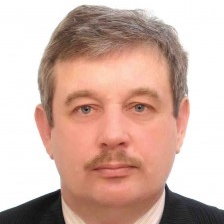Optical Electronic Systems, Communications and Security
A special issue of Electronics (ISSN 2079-9292). This special issue belongs to the section "Systems & Control Engineering".
Deadline for manuscript submissions: closed (30 November 2022) | Viewed by 7430
Special Issue Editors
Interests: control theory; mechatronics; robotics systems; synergy; nonlinear dynamics
Special Issues, Collections and Topics in MDPI journals
Interests: quantum cryptography; quantum key distribution; information security; project education
Special Issues, Collections and Topics in MDPI journals
Interests: carbon nanofibers; needle-free electrospinning; mycelium Pleurotus Ostreatus /polymer nano-composites; 3D printing; 2D/ 3D design process; pattern design; fashion design; smart textiles
Special Issues, Collections and Topics in MDPI journals
Special Issue Information
Dear Colleagues,
Secure data transmission is a critical challenge for scientists and engineers. With the development of quantum computers, classical methods of cryptography are under threat. Today, quantum cryptography is a topical trend in secure communication systems.
The main problem in the transmission of confidential information is distributing the secret key between two remote correspondents. For each user, random string identical bits are formed, which are used as a cryptographic key. To ensure absolute secrecy in the cryptographic system, it is necessary to satisfy certain conditions: the key should be completely random, key length should be greater than or equal to the length of the encoded message, and a key can be used only once. A solution to ensure secrecy in key distribution is based on the principles of quantum cryptography and includes coding quantum state of a single particle (photon). The secrecy and the impossibility of unauthorized access to the messages are based on the laws of quantum physics, as opposed to classical methods of cryptography, which are based on mathematical patterns and potentially indecipherable.
This Special Issue invites original reviews and articles on optical electronic systems, communications, control and systems engineering, electrical and electronic engineering, nanomaterials, quantum optics in quantum cryptography, quantum protocols, optical circuits and components, vulnerabilities, and quantum key distribution systems.
Dr. Gennady E. Veselov
Dr. Anton Pljonkin
Dr. Lilia Sabantina
Guest Editors
Manuscript Submission Information
Manuscripts should be submitted online at www.mdpi.com by registering and logging in to this website. Once you are registered, click here to go to the submission form. Manuscripts can be submitted until the deadline. All submissions that pass pre-check are peer-reviewed. Accepted papers will be published continuously in the journal (as soon as accepted) and will be listed together on the special issue website. Research articles, review articles as well as short communications are invited. For planned papers, a title and short abstract (about 100 words) can be sent to the Editorial Office for announcement on this website.
Submitted manuscripts should not have been published previously, nor be under consideration for publication elsewhere (except conference proceedings papers). All manuscripts are thoroughly refereed through a single-blind peer-review process. A guide for authors and other relevant information for submission of manuscripts is available on the Instructions for Authors page. Electronics is an international peer-reviewed open access semimonthly journal published by MDPI.
Please visit the Instructions for Authors page before submitting a manuscript. The Article Processing Charge (APC) for publication in this open access journal is 2400 CHF (Swiss Francs). Submitted papers should be well formatted and use good English. Authors may use MDPI's English editing service prior to publication or during author revisions.
Keywords
- electronics
- optical systems
- communications
- control engineering
- electrical engineering
- nanomaterials
- carbon
- quantum cryptography
- quantum protocols
- optical circuits and components
- vulnerabilities
- quantum key distribution







